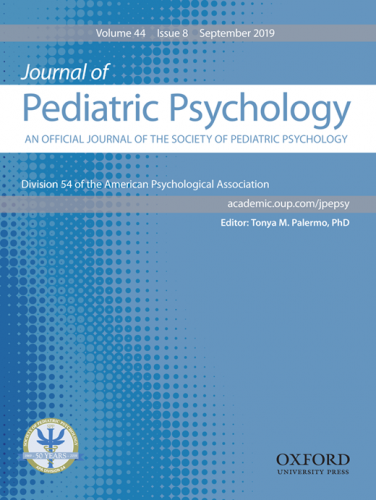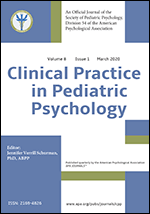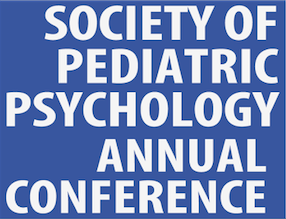Fact Sheet: Cleft Lip and/or Palate
Cleft lip and/or palate (CLP) is a congenital birth defect that occurs when there is a separation in the lip and/or palate. There is no identified single cause and current research suggests that a combination of genetic and environmental factors lead to CLP. CLP can be diagnosed prenatally via ultrasound or at birth.
Prevalence and Course
Cleft lip and/or Palate (CLP) is one of the most common congenital birth defects (1 in 600 live births) and occurs when there is a separation in the tissues that fuse during normal development to form the lip and/or palate. CLP can be caused by various factors (both environmental and genetic), but in many cases, the specific cause of CLP is unknown. CLP can occur alone (i.e., isolated cleft) or as part of a more complex syndrome (Van der Woude syndrome) or condition (e.g., Pierre Robin sequence), with 15% of cases of CLP occurring in patients with a known genetic diagnosis. Children with CLP typically undergo numerous surgical, speech, and orthodontic interventions throughout childhood and adolescence and are treated by a variety of disciplines, including speech and language pathology, surgery, audiology, orthodontics, dentistry, and genetics, among others. Most, if not all, cleft interdisciplinary teams also have a mental health provider, such as a psychologist or social worker, who provides brief and/or comprehensive assessment of cognitive, psychosocial, and developmental functioning. In addition, when needed youth with CLP may be referred to an outside mental health provider for additional or more intensive assessment or intervention based on concerns raised by the patient, family, and/or medical team.
Health and Psychosocial Consequences
While many youth with CLP may not experience adverse psychosocial outcomes, areas of increased risk identified for this population include:
- Social stigma, including teasing and bullying, related to appearance and/or speech, more commonly reported in adolescence
- Other social concerns, including withdrawal/social isolation, social anxiety, and social skills deficits
- Body image and self-concept concerns
- Internalizing and externalizing behavior concerns
Findings for academic performance in youth with CLP are not clear at this time.
- While overall IQ tends to be average, learning disabilities have been identified in as many as 30-40% of patients with a cleft, especially in reading
- Youth with CLP may demonstrate lower performance for phonological awareness
- Other factors that may impact academic performance include hearing problems, missed school days due to treatments and appointments, and differences in social competence
CLP does not only affect the individual patient. Family factors to consider include:
- Parental coping (possible feelings of guilt and/or blame)
- Increased permissiveness or overprotectiveness for the child with the cleft (which will likely negatively impact family and psychosocial functioning)
- Sibling adjustment
- Increased familial conflict and/or stress
Evidence-based Assessment
Important areas of assessment for mental health professionals working with youth with CLP to consider include psychosocial, cognitive, speech/language, behavioral, and developmental functioning. If your patient has been seen by a mental health provider as part of an interdisciplinary team, some evaluation may already have occurred. Mental health services typically delivered with this population may address general clinical concerns not related to the cleft (e.g., behavior management) or concerns more directly related to the cleft (e.g., teasing, preparing for surgery).
Culture, Diversity, Demographic and Developmental Factors
Medical treatment of CLP may continue from infancy to late adolescence when skeletal maturity is reached; as such, relevant developmental factors that may be raised in individual treatment include:
- Identity development related to appearance and peer relationships
- Understanding of medical information
- Involvement of patient in surgical decision making in later childhood and adolescence
- Eventual decision making regarding having children considering the risk of CLP or a related genetic syndrome in future children
Other relevant factors for treatment of youth with CLP may include:
- Different prevalence rates for CLP among different racial/ethnic groups
- Family SES and financial resources to support interventions not typically covered by insurance (e.g., orthodontics for some payors, dental implants)
- Cultural and religious differences regarding treatment and the understanding of the condition
Evidence-based Interventions
Evidence-based interventions for CLP-specific concerns include social skills training and cognitive-behavioral interventions such as relaxation training and cognitive restructuring to address self-image concerns and presurgical anxiety. School consultation and advocacy for appropriate accommodations is also likely to be an important component of intervention, given the prevalence of learning difficulties associated with CLP. Of note, current research on effective psychosocial intervention for youth with CLP is limited.
Resources
Authors: Patricia Marik, Psy.D., Celia Heppner, Psy.D., Janine Rosenberg, Ph.D., & Eric Riklin, M.A.
Date of last update: February, 2020
References
- Berger, Z.E., & Dalton, L.J. (2011). Coping with a cleft II: Factors associated with psychosocial adjustment of adolescents with cleft lip and palate and their parents. Cleft Palate-Craniofacial Journal, 48(1), 82-90.
- Demir, T., Karacetin, G., Baghaki, S., & Aydin, Y. (2011). Psychiatric assessment of children with nonsyndromic cleft lip and palate. General Hospital Psychiatry, 33, 594–603. doi:10.1016/j.genhosppsych.2011.06.006
- Feragen, K. B., Særvold, T. K., Aukner, R., & Stock, N. M. (2017). Speech, language and reading in 10-year-olds with cleft: Associations with teasing, satisfaction with speech and psychological adjustment. The Cleft Palate-Craniofacial Journal, 54(2), 153-165. doi: 10.1597/14-242
- Hood, M., Cradock, M., & Vander Wal, J. (2010). A survey of psychological assessment on interdisciplinary craniofacial teams. Cleft Palate-Craniofacial Journal, 48(4), 425-444.
- Kapp-Simon, K.A. (1995). Psychological interventions for the adolescent with cleft lip and palate. Cleft Palate-Craniofacial Journal, 32(2),104-108.
- Norman, A., Persson, M., Stock, N., Rumsey, N., Sandy, J., Waylen, A.,…Ness, A. (2015). The effectiveness of psychosocial intervention for individuals with cleft lip and/or palate. The Cleft Palate-Craniofacial Journal, 52(3), 301-310. doi:10.1597/13-276
- Richman, L.C., McCoy, T.E., Conrad, A.L., Nopoulos, P.C. (2012). Neuropsychological, behavioral and academic sequelae of cleft: Early developmental, school-age and adolescent/young adult outcomes. Cleft Palate-Craniofacial Journal. 49(4), 387-396.
- Roberts, R.M., Mathias, J.L., & Wheaton, P. (2012). Cognitive functioning in children and adults with nonsyndromal cleft lip and/or palate: A Meta-analysis. Journal of Pediatric Psychology, 37(7), 786-797.



